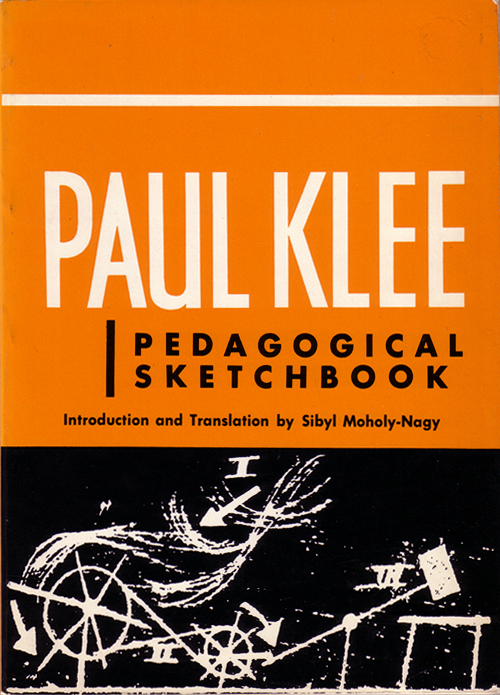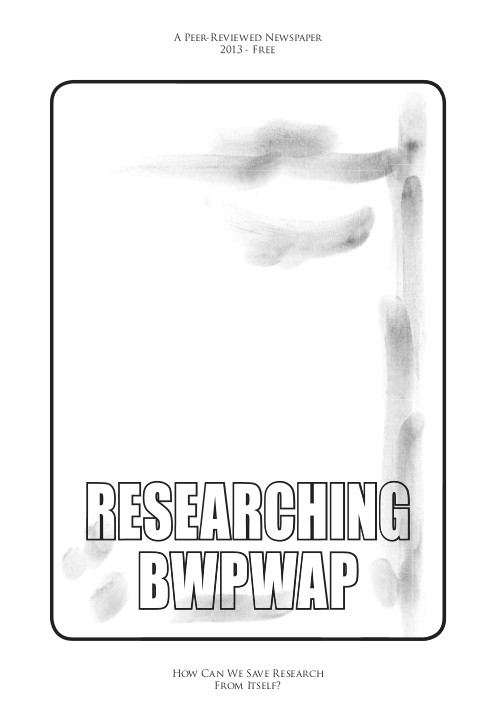László Moholy-Nagy: Painting, Photography, Film (1925–) [DE, EN]
Filed under book | Tags: · art, art theory, bauhaus, collage, design, film, montage, painting, photogram, photography

This book presents Moholy-Nagy’s photograms, X-rays, super-wide-angle fisheye pictures, double prints, collages, montages, and the Bauhaus artist’s thoughts on the interrelationship of type, audio, and visual perception.
From the English edition: “The layout of the pages designed by Moholy-Nagy in 1927–bold sans-serif captions surrounded by lots of white space; compositions composed of arrows, dots, photographs, and heavy ruled lines — is much more like a movie storyboard or a musical score. It conveys a suggestion of imploding optical and retinal phenomena, much like driving down the Los Angeles Freeway at 70 mph or jolting through Philadelphia on the Metroliner.. This edition is a translation and facsimile of the second German edition of Malerei, Fotographie, Film published in 1927 by the Bauhaus Press; and it serves as a valuable reminder of the graphic design pioneered at the Bauhaus by Moholy-Nagy and Herbert Bayer..”
“Gropius had invited the twenty-eight-year-old Hungarian phenom onto the Bauhaus faculty in 1923, and Malerei Fotografie Film is Moholy-Nagy’s first attempt to lay out his entire theory and program for photography, and ultimately, for the transformation of human vision.. The book’s bold typography and design enacted Moholy’s concept of ‘typofoto,’ involving the integration of type and images, which was further elaborated in his two later theoretical works, Von Material zu Architektur and Vision in Motion..” (Randell Roth)
Contains photographs by Alfred Steiglitz, Albert Renger-Pazsch, L. Moholy-Nagy, Man Ray, Lucia Moholy, Hannah Hoch and others.
Publisher Albert Langen, Munich, 1925
Volume 8 of Bauhausbücher series
Second edition, 1927
140 pages
via Bibliothèque Kandinsky
English edition
With a Note by Hans M. Wingler, and a Postcript by Otto Stelzer
Translated by Janet Seligman
Publisher Lund Humphries, London, 1969
150 pages
via Sorin Danut
Malerei, Fotografie, Film (German, 2nd ed., 1925/1927, 131 MB, via Bibliothèque Kandinsky, updated on 2022-4-13)
Malerei, Fotografie, Film (German, 2nd ed., 1925/1927, PDF, JPG, in Heidelberg U Library, added on 2019-7-7)
Painting, Photography, Film (English, trans. Janet Seligman, 1969, added on 2014-8-17)
See also other titles in Bauhaus Books series.
Comments (9)Paul Klee: Pedagogical Sketchbook (1925–) [DE, EN, GR, RU]
Filed under book | Tags: · art, art education, bauhaus, colour, design, drawing, painting, theory

“Paul Klee occupies a unique position among the creators of modern art. Although he shed all ties with conventional presentation, he developed a closer and deeper relationship to reality than did most painters of his time. Without any attempt at imitation or idealization, he recorded proportion, motion, and depth in space as the fundamental attributes of the visual world.
Klee collected his observations in his Pedagogical Sketchbook intended as the basis for the course in design theory at the famous Bauhaus art school in Germany. From the simple phenomenon of interweaving lines, his work leads to the comprehension of defined planes-of structure, dimension, equilibrium, and motion. But he employs no abstract formulas. The student remains in the familiar world-a world that acquires new significance through the straight forward approach of Klee’s simple, lucid drawings and his precise captions. Chessboard, bone, muscle, heart, a water wheel, a plant, railroad ties, a tightrope walker-these serve as examples for the forty-three design lessons.
Pedagogical Sketchbook is a vital contribution toward a more human, more universal goal in design education the work of a visionary painter who dedicated himself to the practical task of making people see.” (from the Back cover)
Publisher Albert Langen, Munich, 1925
Volume 2 of Bauhausbücher series
50 pages
English edition
Introduction and Translation by Sibyl Moholy-Nagy
Publisher Frederick A. Praeger, New York, 1953
The original layout by L. Moholy-Nagy has been retained
65 pages
Pädagogisches Skizzenbuch (German, 33 MB, via Bibliothèque Kandinsky, added on 2014-8-17, updated on 2022-4-13)
Pädagogisches Skizzenbuch (German, PDF, JPG, in Heidelberg U Library, added on 2019-7-7)
Pedagogical Sketchbook (English, 1953 edition, no OCR)
Pedagogical Sketchbook (English, 1960 edition, 7th printing from 1972)
Παιδαγωγικό Σημειωματάριο (Greek, trans. Β. Λαγοπούλου, 1976)
Pedagogikheskie eskizy (Russian, trans. N. Druzhkovoy, 2005, added on 2014-3-6)
See also other titles in the Bauhaus Books series, as well as Klee’s class notes in manuscript and an edited version of his Notebooks.
Comments (10)A Peer-Reviewed Newspaper, 2(1): Researching BWPWAP (2013)
Filed under journal | Tags: · art, artistic research, code, design, economy, education, media art, net art, software

“In referring to the cancellation of Pluto’s planetary status in 2006, BWPWAP (Back When Pluto Was a Planet) – the 2013 edition of the transmediale festival – interrogates techno-cultural processes of displacement and invention, and asks for artistic and speculative responses to new cultural imaginaries. In light of this, the conference and workshop Researching BWPWAP took place in November 2012 in Lüneburg, Germany, organised jointly by Leuphana University of Lüneburg, Aarhus University and the reSource transmedial culture/transmediale. The call for participation focused on Ph.D. researchers and other participants to speculate on BWPWAP as a pretext for presenting their research and even to further reflect on its circulation as a meme.
This newspaper presents some outcomes of this process, and like the conference and workshop, can be interpreted in the context of a research culture that has been significantly destabilized by network culture and digital media. If the planet Pluto didn’t exactly fall prey to an epistemological break or a scientific revolution, but rather to a mundane administrative procedure – a redefinition of what constitutes a planet – then what does this say about contemporary research culture? Certainly, much research culture has shared Pluto’s fate: conferences reduced to networking events to foster cultural capital, and scholarly communications reduced to impact factors measured by grant givers. In other words, research is not just about measuring the performativity of a single researcher (the peer-reviewed journal system), but also the processes of questioning, investigating, speculating, and sharing between peers in a broader sense.” (from the Editorial)
Edited by Christian Ulrik Andersen and Geoff Cox
Publisher Digital Aesthetics Research Center, Aarhus University, Aarhus, in collaboration with reSource transmedial culture Berlin/transmediale, Berlin, February 2013
Creative Commons Attribution-NonCommercial-ShareAlike license
ISBN 8791810256
ISSN 2245-7593
PDF, PDF (updated on 2018-9-20)
Comment (0)
